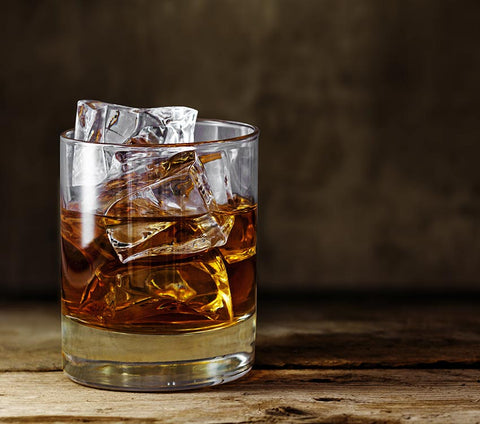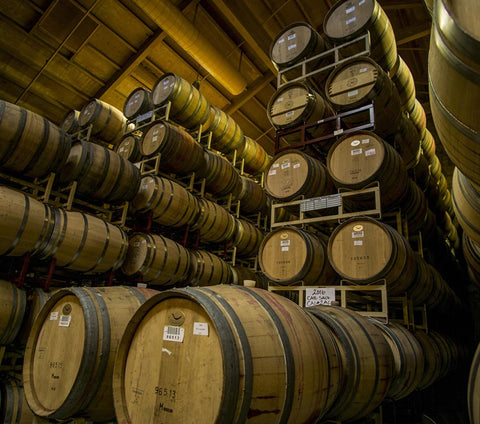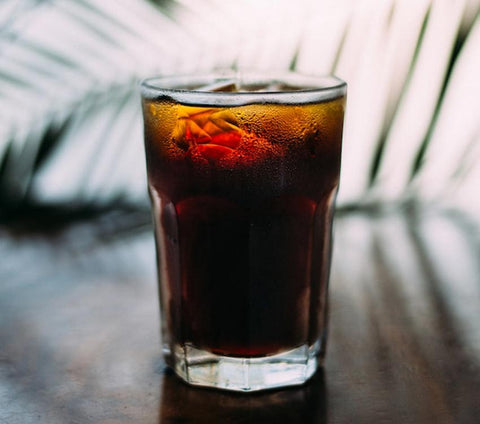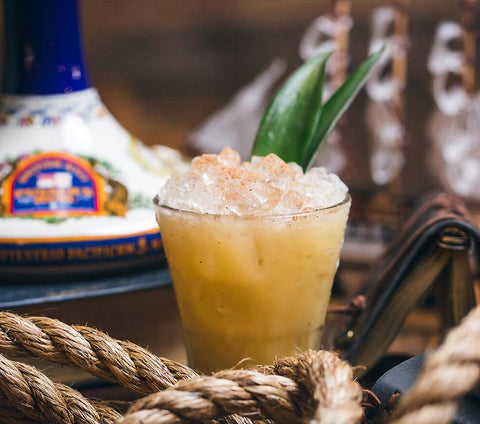Rum Ration: The Complete History Behind "the Daily Tot"
 Would you like to work someplace where you could drink on the job?
Would you like to work someplace where you could drink on the job?
If you were a sailor for the British Royal Navy between 1655 and 1970, drinking on the job was the norm. Known as the "daily tot," this rum ration was distributed to all seafaring men.
How did this (rather wonderful) tradition get its start? What was its purpose? And why did it end?
Pour yourself a drink and set sail with us on this fascinating voyage into the history of rum rations.
A Brief History of the Rum Ration
The idea of daily alcohol rations might seem bizarre, but remember that at many points in history water was not always available or safe to drink.
This was especially true on long voyages at sea, when water supplies could turn rancid (or run out). A gallon of beer was the original rationed drink for sailors, but it too could spoil easily at sea.
Around 1655, many ships switched over to rum rations instead. It didn't rot inside barrels and also didn't take up as much room as beer, freeing precious space for cargo.
So What's a Daily Tot?
Life at sea was challenging, so we can only imagine how much those hard-working sailors looked forward to their daily rum ration.
Between 11 am and noon, a call of "Up Spirits!" would echo through the ship. This was the signal for all men to gather on deck to receive their "daily tot" of rum.
In 1740, Admiral Edward Vernon introduced a concoction of watered-down rum mixed with sugar and lime juice. This "grog" was supposed to reduce drunkenness, but many sailors saved their rations for drinking sprees.
And yes, this is where we get the term "groggy" to describe that fuzzy-headed feeling after a night of drinking.
Fun trivia fact: The officer in charge of distributing the rum ration was known as the purser. Mispronunciations of the name led to calling the rum "Pusser's," making it the precursor to the award-winning rum you know and love today.
The Day Rum Rations Ended
The rum ration tradition survived Caribbean conquests, the settlement of the Americas, and two World Wars.
By the 1960s, technology on naval vessels had advanced to include complex machinery. Operating these delicate systems while under the influence of alcohol was no longer considered safe.
On July 31, 1970, now known as Black Tot Day, naval sailors enjoyed their last daily tot ration. Many wore black armbands and poured their ration into the sea as a symbolic "burial" of the much-loved tradition.
Pusser's Rum: Ready for Your Daily Tot?
The rum ration was a practice that spanned over 300 years of naval history.
It kept morale high among sailors—and we're sure a few tears were shed when they drank their final ration on Black Tot Day.
Luckily, we here on land aren't under any restrictions when it comes to rum rations. (You can even have your rum cake and eat it too.)
If all this talk of rum is making you thirsty, you're in luck. We're here to quench your thirst with our collection of smooth, delicious rums.








As far as known rum was first manufactured on the island of Barbados which was the stronghold of the British in the Caribbean. It is still being manufactured there and boasts the world’s oldest and most desirable brands. Sugar cane was introduced in Barbados by Dutch planters from Brazil and on a visit to the island you can still see evidence of the windmills they built to grind the cane by wind-power. Most of the bricks for the structure of the windmills and the cisterns for boiling the juice came from the Calder Brick Factory in Scotland. There is still a functionable windmill in the parish of St. Andrew, Barbados. Life in the Royal Navy was harsh with the cat-o-nine tails in regular use and of course legally questionable recruitment by the press-gang did not guarantee the most vicious military action but this is most likely where the best use of “spirits” was applied to reduce the inherent fear which is normal for men called upon to put their lives on the line. There was plenty of cheap and effective spirits in the form of rum to go around in the Caribbean. Barbados produced a disproportionate share of free roaming marine brigands fueled up by this same rum, the most notorious of whom may be Stede Bonnet who perished at the end of a rope in Charlestown, South Carolina while his sidekick Edward “Blackbeard” Teach escaped the noose.
I have always enjoyed rum but in 1978 when I was called up for military service in the South African Navy I became friends with some Royal Navy sailors they shared some of their daily grog ration with me. Since then Pussers Rum has been my go to Rum. I am retired now and can no longer afford Pussers, however it is hard to find so when I can afford to have a Grog I am forced to buy another brand of Rum but Pussers is still the best!
As a kid, l wanted to join the Andrew with my mate who went to ‘Ganges’.
Dad wouldnt let me so l joined the Reserves, and in 1970, l was elligable for my first run offshore on the Minesweeper ‘HMS Northumbria’ for our annual cruise.
Sadly, it was the year the ’ tot ’ was scrapped, so l never did get my ‘tot’….Sad…!
I was in the Royal Navy from 1959 until 1970, and I had a daily tot from the age of 18 in 1963.
As junior rates we had grog as our tot, this was mixed as two measures of water and one of rum. Senior Rates – Petty Officer & Chief Petty Officers – had a neat tot of rum. Officers never received rum as a daily issue but would participate if an extra tot were issued due to working in hazardous or rough conditions.
N.B. because of the mixture of water, grog could not be stored so it had to be consumed on the day of issue. It was also against regulations (QR & AI) so the killick of the mess had the responsibility to see that any leftovers were ‘disposed’ of correctly. Neat rum could be stored as it was not adulterated with water. However, the same rule, that it should be consumed on the day of issue, applied to Senior rates. I couldn’t possibly comment on whether the rules were meticulously followed but my dad enjoyed a sip or two when I went on leave.
‘Pussers’ rum is pretty close to the original taste but don’t adulterate it with spices and assume you have joined the proper Royal Navy ‘Rum Rats’
In the time honoured fashion, I raise a glass to: “The Queen, God Bless Her.”
RIP to both our late Queen and our great tot.
the RNZN continued the Rum issue for several years after the RN. the only Navy to do this.
for afternoon watch crew. the issue was delayed until after the watch was over .
Leave a comment